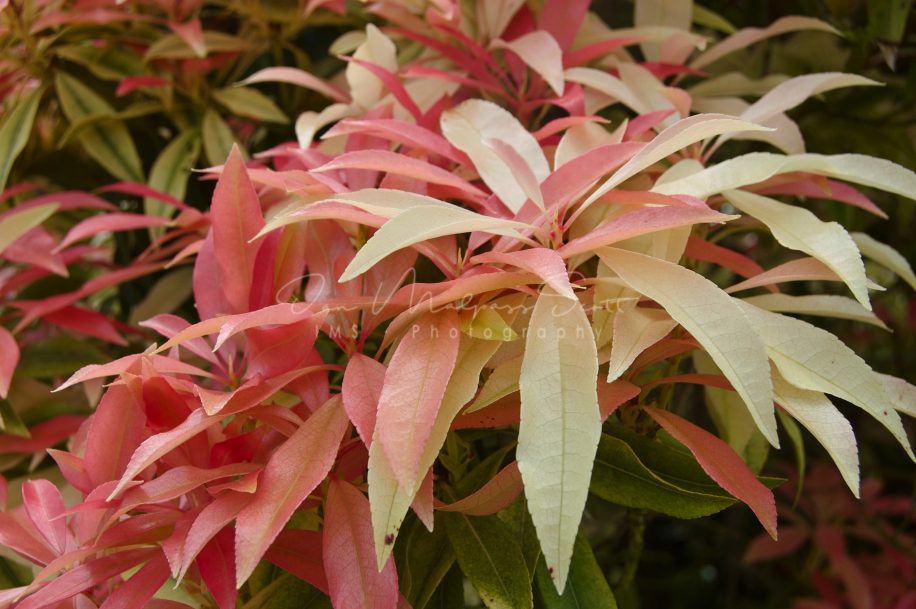![]()
Pieris in the gardens of Seaton Deleval Hall, Northumberland.
Pieris (/ˈpaɪ.ərɪs/ or /ˈpɪərɪs/ is a genus of seven species of shrubs in the flowering plant family Ericaceae, native to mountain regions of eastern and southern Asia, eastern North America and Cuba. Known commonly in North America as andromedas or fetterbushes, they are broad-leaved evergreen shrubs growing to 1–6 metres (3 ft 3 in – 19 ft 8 in) tall and 3–10 ft (0.9–3.0 m) wide. The leaves are spirally arranged, often appearing to be in whorls at the end of each shoot with bare stretches of shoot below; they are lanceolate-ovate, 2–10 cm (0.8–3.9 in) long and 1.0–3.5 cm (0.4–1.4 in) broad, leathery textured, and with an entire or serrated margin. The young leaves in spring are typically brightly coloured. The flowers are bell-shaped, 5–15 mm (0.2–0.6 in) long, white or pink, and arranged in racemes 5–12 cm (2.0–4.7 in) long. The fruit is a woody capsule which splits into five sections to release the numerous small seeds.
Pieris species are used as food plants by the larvae of some Lepidoptera species including the engrailed.
The genus name derives from Pieria, a place in Greece, according to Greek mythology the home of the Muses.


